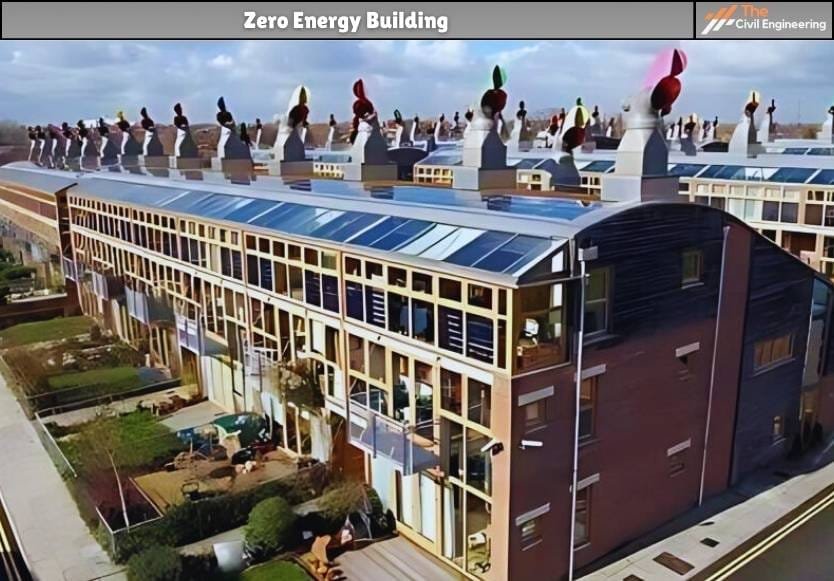1. Overview
Zero Energy Building is defined as a building with zero net energy consumption throughout the year.
In this regard, It is the building in which the total amount of energy consumed is equal to the amount of renewable energy produced at the site.
It is also referred to as Zero Net Energy Building or Net-Zero Energy Building.
They are also characterized by zero carbon emissions.
In a general sense, these buildings consume less energy than a typical traditional building as well as produce energy within the site that can be duly utilized by the building itself.
2. Development of Concept of Zero Energy Building
The concept of zero energy building began with the increased problems faced due to various environmental issues such as climate change, global warming, pollution, and ecosystem conservation.
The concept of low energy building was put forward for the first time by German scholar Wolfgang Feist and Swedish professor Bo Adamson of Lund University.
Ultimately, in 1990, in Germany, the first energy-efficient building was constructed which marked the beginning of the development of a new environmentally friendly building construction technology i.e. Zero Energy Building.
To conduct further research on this emerging concept and for its further advancement, in Darmstadt Germany, the Passivhaus Institut was founded in the year 1996.
Since then, the institute has been successful in constructing 15,000 such buildings.
The World Business Council for Sustainable Development has even undertaken a major initiative regarding the development of zero energy building.
3. Mechanism of Zero Energy Building

As depicted in the figure above, the mechanism of zero energy building involves the transfer of energy to and from the building such that the amount of energy used and the amount of energy delivered is equal.
The energy needs of the building mostly include lighting, electrical appliances, heating, cooling, hot water, etc.
To meet these energy needs, it produces or generates energy utilizing several renewable sources such as solar cells provided at the site.
Several micro-generation techniques of energy production are used which may be listed as follows:
1. Wind turbines
2. Solar cells
3. Biogas
4. Small scale hydro-power
4. Advantages of Zero Energy Building
1. Reduction in the net monthly expense of living
2. Higher resale value
3. Increased comfort in living
4. Better reliability
5. Economical even in the long run
6. Isolation from the future energy rate increase
7. Environmentally compatible
8. Lower emission of carbon
9. Sustainable construction
5. Disadvantages of the Zero Energy Building
1. Higher initial investment
2. Lack of expertise in such technology
3. The requirement of newer relatively advanced technology
6. Examples
1. The National Research Institute Laboratory Research Support Facility, Golden CO
2. Phipps Centre for Sustainable Landscape, Pittsburgh
3. Wayne Aspinall Building and U.S courthouse, Grand Junction CO


